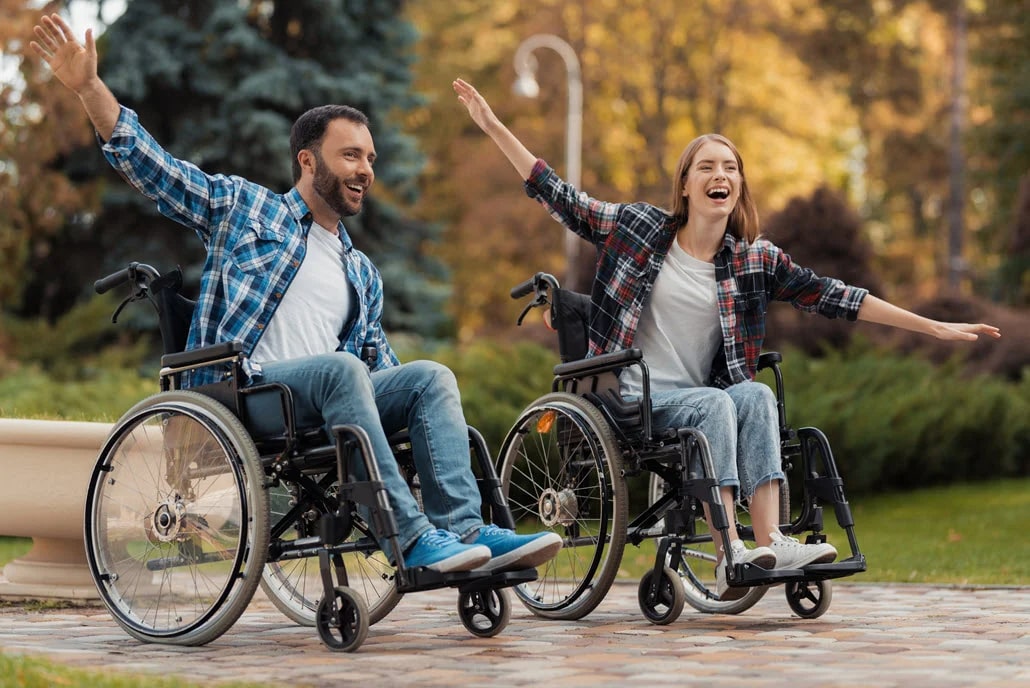service details

General information
Living Healthy with a Disability
People with disabilities need health care and health programs for the same reasons anyone else does—to stay well, active, and a part of the community.
Having a disability does not mean a person is not healthy or that he or she cannot be healthy. Being healthy means the same thing for all of us—getting and staying well so we can lead full, active lives. That means having the tools and information to make healthy choices and knowing how to prevent illness.
For people with disabilities, it also means knowing that health problems related to a disability can be treated. These pro
blems, also called secondary conditions, can include pain, depression, and a greater risk for certain illnesses.
To be healthy, people with disabilities require health care that meets their needs as a whole person, not just as a person with a disability. Most people with or without disabilities can stay healthy by learning about and living healthy lifestyles.
Leading a Long and Healthy Life
Although people with disabilities sometimes have a harder time getting and staying healthy than people without disabilities, there are things we can all do to get and stay healthy.
Tips for leading a long and healthy life
-Be physically active every day.
-Eat healthy foods in healthy portions.
-Don’t get too much sun.
-Get regular checkups.
-Don’t smoke.
-Use medicines wisely.
-If you drink alcoholic beverages, drink in moderation.
-Get help for substance abuse.
-Stay in touch with family and friends.
-If you need help, talk with your health care professional.
Getting the best possible health care
People with disabilities must get the care and services they need to help them be healthy.
If you have a disability, there are many things you can do to make sure you are getting the best possible health care:
-Know your body, how you feel when you are well and when you’re not.
-Talk openly with your health care professional about your concerns.
-Find health care professionals that you are comfortable with in your area.
-Check to be sure you can physically get into your health care professional’s office, such as having access to ramps or elevators if you use an assistive device like a wheelchair or scooter.
-Check to see if your health care professional’s office has the equipment you need, such as an accessible scale or examining table.
-Ask for help from your health care professional’s office staff if you need it.
-Think about your questions and health concerns before you visit your health care professional so that you’re prepared.
-Bring your health records with you.
-Take a friend with you if you are concerned you might not remember all your questions or what is said by the health care professional.
-Get it in writing. Write down, or have someone write down for you, what is said by the health care professional.
Physical Activity
Adults of all shapes, sizes, and abilities can benefit from being physically active, including those with disabilities. For important health benefits, all adults should do both aerobic and muscle-strengthening physical activities. Regular aerobic physical activity increases heart and lung functions; improves daily living activities and independence; decreases chances of developing chronic diseases; and improves mental health.
Adults with disabilities should try to get at least 2 hours and 30 minutes (150 minutes) a week of moderate-intensity aerobic physical activity (i.e., brisk walking; wheeling oneself in a wheelchair) or at least 1 hour and 15 minutes (75 minutes) a week of vigorous-intensity aerobic physical activity (i.e., jogging, wheelchair basketball) or a mix of both moderate- and vigorous-intensity aerobic physical activities each week. A rule of thumb is that 1 minute of vigorous-intensity activity is about the same as 2 minutes of moderate-intensity activity. They should avoid inactivity as some physical activity is better than none.
Muscle-strengthening activities should include moderate and high intensity, and involve all major muscle groups on two or more days a week (i.e., working with resistance-band, adapted yoga) as these activities provide additional health benefits. All children and adolescents should do 1 hour (60 minutes) or more of physical activity each day.
If a person with a disability is not able to meet the physical activity guidelines, they should engage in regular physical activity based on their abilities and should avoid inactivity. Adults with disabilities should talk to their healthcare provider about the amounts and types of physical activity that are appropriate for their abilities.
Tips for getting fit:
-Talk to your doctor about how much and what kind of physical activity is right for you.
-Find opportunities to increase physical activity regularly in ways that meet your needs and abilities.
-Start slowly, based on your abilities and fitness level (e.g. be active for at least 10 minutes at a time, slowly increase activity over several weeks, if necessary).
-Avoid inactivity. Some activity is better than none!
Mental Health and Well-Being
For everyone, overall mental health and well-being is very important. Mental health is how we think, feel and act as we cope with life. People need to feel good about their life and value themselves.
All people, including those with disabilities might feel isolated from others, or have low self-esteem. They may be depressed. There are different ways to treat depression. Exercise may be effective for some people. Counselling, medication, or both might also be needed.
Everyone feels worried, anxious, sad or stressed sometimes. If these feelings do not go away and they interfere with your daily life, you should talk with other people about your feelings, such as a family member or health care professional.